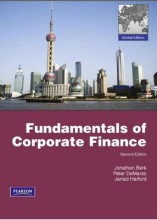Aggregate demand, aggregate supply and inflation
4 important questions on Aggregate demand, aggregate supply and inflation
The main shortcoming of the basic Keynesian model is that:
The aggregate demand curve (AD) shows:
All other factors held constant, a higher rate of inflation will lead to lower planned spending (movement along the AD curve). Two sorts of changes that shift the AD curve are:
- Exogenous changes in spending: changes in spending caused by factors other than interest rates.
- Changes in central bank monetary policy, as reflected in change in interest rates.
- Higher grades + faster learning
- Never study anything twice
- 100% sure, 100% understanding
Possible policy responses to demand and supply shocks are:
- Responding to a demand shock: the central bank can either do nothing and SRAS will shift up over time (resulting in a higher inflation level) or it can raise interest rates which decrease aggregate demand.
- Responding to a supply shock: the central bank can either do nothing and SRAS will shift down over time (with possible results during the adjustment period being stagflation) or it can lower interest rates which increase aggregate demand (monetary accommodation).
The question on the page originate from the summary of the following study material:
- A unique study and practice tool
- Never study anything twice again
- Get the grades you hope for
- 100% sure, 100% understanding
































